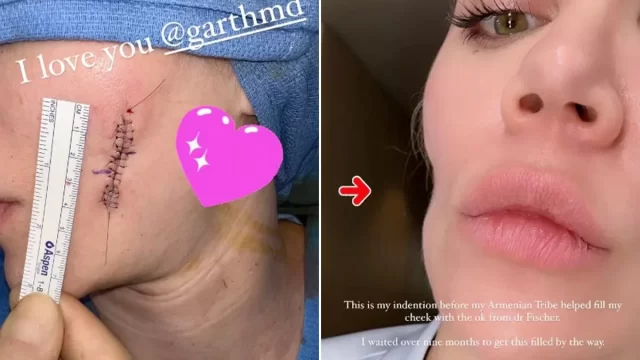“It is the most dangerous form of skin cancer due to its potential to spread to other parts of the body,” according to Dr Swapna Priya Consultant Dermatologist CARE Hospitals Hitec City, Hyderabad.
Reality TV star Khloe Kardashian recently revealed her experience with a skin cancer scare in 2022, shedding light on her recovery and encouraging her followers to undergo regular skin cancer screenings. Kardashian took to Instagram to share a series of photos illustrating the aftermath of her melanoma tumor removal from her cheek, which left an indentation.
In a mirror selfie showcasing a close-up of her cheek, Kardashian wrote, “Not that we needed the arrow to show the huge indentation on the side of my face, but because we had to remove a tumor from my cheek, I was left with an indentation.”
The 39-year-old celebrity admitted that she had mistaken a tiny spot on her cheek for a pimple for over a year. She continued, “I am definitely not complaining because I would rather have an indentation than melanoma any day. I am so incredibly grateful to all the doctors who helped and continue to help me with my skin cancer journey.”
Dr. Rinky Kapoor, a Consultant Dermatologist, Cosmetic Dermatologist, and Dermato-Surgeon at The Esthetic Clinics, explained that melanoma is a type of skin cancer originating in melanocytes, the cells responsible for producing melanin—the pigment that gives color to our skin, hair, and eyes. She emphasized that it is the most dangerous form of skin cancer due to its potential to metastasize to other parts of the body.
Dr. Swapna Priya, Consultant Dermatologist at CARE Hospitals Hitec City, Hyderabad, added that melanoma is primarily caused by DNA damage in skin cells, often triggered by exposure to ultraviolet (UV) radiation from the sun or tanning beds. Other risk factors include a history of severe sunburns, fair skin, a family history of melanoma, multiple moles, a weakened immune system, and certain genetic factors.
To facilitate early detection, Dr. Kapoor advised regular self-examination of the skin using the ABCDE rule:
- A: Asymmetry
- B: Border irregularity
- C: Color changes
- D: Diameter greater than 6mm
- E: Evolution or changes over time
Additionally, it is recommended to undergo a full-body skin examination by a dermatologist annually. Individuals at higher risk may need more frequent visits, as determined by their dermatologist, Dr. Priya advised.
Factors that can indicate a higher risk of melanoma include:
- Skin Type: Fair-skinned individuals with light eyes and hair are at higher risk due to less melanin, which provides some natural protection against UV radiation.
- Personal History: Previous melanoma cases increase the risk of recurrence.
- Family History: A family history of melanoma elevates the risk.
- Exposure to UV Radiation: Extensive exposure to UV radiation from the sun or tanning beds also heightens the risk.









